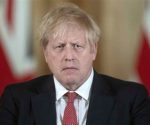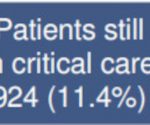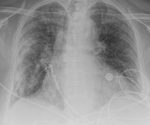Millions of under-50s in England to refuse “Covid-19 vaccination”?
In a previous article serving as an update of this kind, it was suggested that the prime motivation for the “Covid-19 vaccine” rollout was the induction of as many people as possible into being a client population for allopathic medicine and pharmaceutical drugs dependency, and therefore cash-cows for the movement of tax revenue into corporate coffers. The development whereby there will be booster jabs on top of the preliminary two doses serves as conformation of this evaluation†. Although not a new idea – the booster “vaccine” has been a thing mulled over in corporate-media at least since February of this year (to acclimatise the public to it) – it is now evidently official, and something called the Cov-Boost study has been launched to trial cocktails of vaccine product on 3000 people already fully invaded – all too obviously, it is an effort to establish superficial justification (because there is no science whatsoever in any aspect of the “Covid-19” farce as it is presented to the public), if it be required, for an extended market for vaccine product.
It’s interesting to note, of course, that when corporate-media was discussing extra jabs at the start of 2021, it was doing so with no certainty that such things would be necessary. Jumping forward a few months, and noticing that take-up of vaccine in the young is looking like it might not be as comprehensive as UK Government might have hoped it would be, it perhaps should not be a surprise that a pathway to booster jabs has been a course set upon. Still characterised as an exercise in finding out if a third dose is needed, and set to commence in June, the outcome of these trials could actually be dependent on how many 16 to 39 year olds decide to get “vaccinated” for a first time, in the meantime.
According to the author’s rough calculations, there are about 13 million people in England, aged 16‡ to 39 years, who are yet to be given any “Covid-19 vaccine” at all. The signs that a good many of these won’t surrender themselves up into pharmaceutical drugs dependency sickness come from observing the data for “vaccine” recipience issued by Public Health England, and in particular the figures, as they have so far been accumulated, for the under-50s.
In the brand new weekly data release, showing dose administration to 16th May, it is quite clearly shown that at this stage of the UK Government’s “vaccine” rollout, it is overwhelmingly, almost exclusively, the under-50s who will be receiving a first dose. The super-group consisting of people aged 50 and over is thoroughly saturated, and while there are 950 thousand people aged 50 and over in England who didn’t take the first vaccine, and while this is important in terms of being a headache for UK Government looking to establish any “vaccine passport”, it’s not as crucial for UK Government in its requirement for as many as possible, who have most lifetime ahead of them, adopt a future stricken by pharmaceutical drug induced ailment.
There is now more data to really begin to get a clear picture of what to expect with under-50 engagement with “Covid-19 vaccine”, and therefore to understand why exactly it is that UK Government has so clearly been spooked (as noted in these pages) at the prospect that it would have been gauging for itself.
The previous estimate made hereabouts that no more than 80% of people aged 45 to 49 would receive a jab can be revised upwards, but only slightly. The percentage increase for this group this week stands at 3.4% (i.e. the cumulative total of first doses administered had increased by 3.4% of the total of the previous week), and in itself it is low at the end of a steadily diminishing weekly progress, indicating slowing take-up. However, it is also poor in the context of the fact that there was a spike last week in first jab recipiency, so that it went from 600 thousand, where it has been holding steady for quite a while, to nearly a million. In other words, there was no correspondence in this age group of first dose take-up in a context of a glut of available jabs. As things stand, only 77.9% of the age group has received the first dose, and using the pattern observed in other age groups, there’s probably no need to expect the final percentage to break out of a range from 82 to 85%. At the most, it would mean 600,000, approximately, in the age group, in the final analysis, not taking the first jab.
Although percentage change had been low for all under 44s from 18th April (as reported in the previous bulletin), the important thing about this section of data was that when take-up for the 40-44 age range was filtered out of it into its own distinct grouping in the weekly release up to 9th May, it was already a large number (at 2.3 million). It means that there was, and is limited scope for improvement, as confirmed by a percentage change of 12%. According to patterns observed in the overall data, it stands for a portent to a drop into a single figure percentage change next week. Depending on how low this number is, it could indicate that, like the 45-49 age group, the final figure for this grouping will range from 82 to 85%. Again, this could mean that as many as (roughly) 600,000 people in this age group will not take a first jab.
The recurrence of the same indicator of refusal in the first two under 50s sub categories offers up a natural figure to use to try and understand how many people in the entirety of the super-group (which ranges from 16 to 49) would not be taking a “vaccine”. As yet, Public Health England does not publish a percentage of the population who are under 39 and who are first dose recipients, but using the ONS figures for 2019, it is possible to ascertain that a huge number are as yet “unvaccinated”, with only 4,667,454 out of 17.3 million having had the first jab. Using the range of 15-18% as being the band where refusal begins (which is a reasonable factor by which to generate a figure – certainly more so than the 30% of refusal in the youngest loosely estimated previously, hereabouts [for want of enough data]), it could mean that between 1.9 and 2.3 million under-39s in England not taking the first dose. This is a large number of people already before the addition of the 40-49 year olds, so that potentially somewhere in the range of 3 million – the population of a small country, so a very practical number of young, also breeding age adults – will come out of the episode outside of the destructive process.
It’s a good portion of people in terms of being an obstacle to a total “Covid-19”-related and identity based future, and a very good start in the context of spreading distrust of UK Government in the “vaccinated” population who need to continue to be educated about the industrial complex, with the NHS as its face, that seeds illness in what is than a captured clientele, and for whom the people who won’t suffer to be damaged in this way will serve as living examples. Indeed, there are signs in the Public Health England data to show that people under 70 are refusing their second dose in noticeable numbers, and while this is something for another time when the availability of new and more data will make the situation clearer, it is exactly the sort of thing that those who refuse a first dose can inspire.
† Granted, continual administrations of vaccine product will also serve as rationale for a sustained proof of injection certification programme (“vaccine passport”), but do not be surprised if the “booster” is also touted as a one-dose solution which can be used to bring the “unvaccinated” into the net after the initial roll-out has terminated.
‡ The charts by Public Health England indicate that there was always an intention to include 16 and 17 year olds in the programme.


















